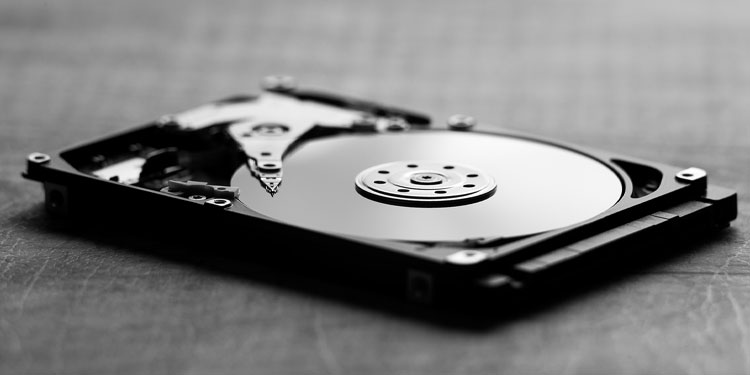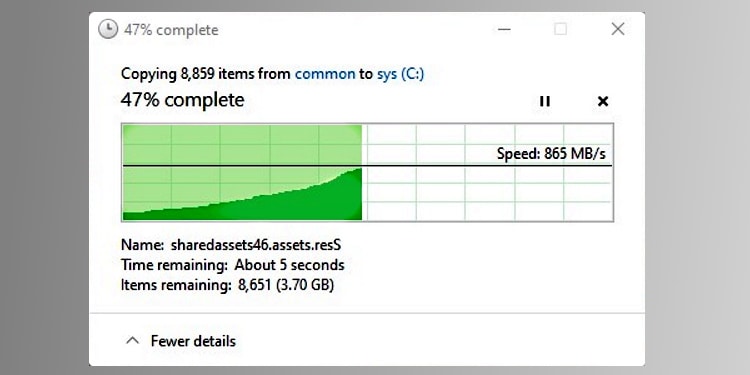Over time, users are bound to run out of hard disk space because of these pictures, videos, games, and applications on the computer. If you are at that point and thinking about expanding your storage capacity, this article is prepared for you. You will have the option of either getting an internal hard drive that is fixed to your system or a portable external drive. Both have advantages and disadvantages, but which one should you opt for? The article below dives into a detailed comparison between the external and internal hard drives, including their pros and cons. We hope you can decide once you’ve given this a thorough read.
What Does a Hard Drive do?
The Operating System facilitates the task of communication between hardware, applications and user. However, the applications, including the Operating System, have to be stored somewhere in the system. This storage is provided by the hard drive. Apart from OS and applications, all the media files too are stored by hard drive. Thus, you can think of the hard drive as a vault where you keep all your applications, files, and documents until you need to retrieve them again. In a modern computer, you will have at least one hard drive built into the system. However, if you need to expand your storage, you have the option to get an external hard drive as well.
Internal Hard Drive
An internal hard drive, also known as the local drive, is simply the hard disk that you install inside the CPU casing of your PC or inside your laptop. You will generally install your Operating System, as well as programs and applications onto the internal hard drive. If you are saving or downloading a file, they will be stored onto the internal hard drive by default. They power on and power off with your system. Internal hard drives these days come in mechanical and solid-state varieties. Internal mechanical hard drives can usually be found in a 3.5”, a 2.5”, or M.2 form factors for desktop PCs. For laptops, they are found in either a 2.5” form, or M.2 form factors. Mechanical hard drives are mostly SATA III compatible while SSD drives are either SATA III or M.2 NVMe compatible devices.
External Hard Drive
External hard drives are compact and portable drives that you can carry around with you. You can connect one to your computer with a cable using either a USB or a thunderbolt connection when you need to use it. They are generally used for backup and data transfer. External hard drives usually come in a SATA III compatible 2.5” form-factor external casing, although you will also be able to find enclosures for a M.2 NVMe SSD.
Comparison between Internal and External Drives
External hard drives are enclosed in a casing that makes them portable. The devices themselves are identical to the ones you would use for an internal drive, However, due to the external enclosure and the interface that you use to connect to the computer, there can be some variations between an internal and an external drive. As such, let us look at a few important aspects where an internal hard drive differs from an external one.
Data Transfer Speed
Theoretically, identical hard drives should have almost similar data transfer speed within a margin of error. However, since external hard drives are connected with a cable, some inherent latency is introduced when switching from SATA to USB or thunderbolt interfaces. In addition, an internal hard drive is connected directly to the motherboard. Thus, you can expect an internal hard drive to be slightly faster than an external drive even when both of them have the exact same specifications.
Portability
An external hard drive is built for portability. You can put it in your backpack or pocket and be on your way to the next computer where you can just plug it in and use it. In contrast, an internal hard drive is not built with portability in mind. To move it to a different location, you will also need to move along other components as well. While this is done all the time with a laptop, you will find it extremely difficult if you are a desktop PC user. In addition, you will not be able to use an internal hard drive in a different system without first removing it from the original computer.
Drive Reliability
Since an external hard drive is designed for portability, it is subjected to physical shocks more often. You might casually toss it onto a desk, inside a backpack, or your pocket. This increases the probability of an external hard drive undergoing physical damage. The circuitry or cable could be damaged due to repeated usage as well since you’re physically interacting with it each time you plug in or plug out the device. An internal hard drive is subjected to physical interaction, shocks, or trauma much less frequently. As such, chances of an internal hard drive failing is much reduced as well.
Program Installation
You would not usually install and run programs and applications off an external hard drive. One of the reasons is that external hard drives do not have a fixed drive letter assignment and this could lead to path issues when you are trying to run a program from one computer to another. Besides, users are much more prone to accidentally deleting or removing files and folders from an external hard drive, which could become an issue. You’d almost always install your favorite applications and programs in an internal hard drive. Since they are assigned fixed drive letter, path finding is usually automatic and not an issue. If you are installing an Operating System, configuring the boot loader in an internal drive is much easier than with an external drive as well.
Price of the Hard Drive
Typically, an external hard drive is going to be more expensive than an internal hard drive even when both have identical specifications and the same manufacturer. This is because an external hard drive comes with an enclosure and additional electronics to switch interfaces, which adds to the manufacturing cost. However, you might see variations where an internal drive of the same capacity might be more expensive than an external drive. This could be because of differences in specifications, such as spindle speed (5400 RPM vs 7200 RPM), interface (USB 3 5 gbps vs 10 gbps vs 20 gbps vs thunderbolt), etc Furthermore, manufacturers and retailers periodically run sales where you can find products at a discounted price. Currently, you can expect internal hard drives to cost around USB 40 per TB while external hard drives cost around USD 50 for the same.
Difference Between Internal and External Hard Drives








title: “External Vs Internal Hard Drive Detailed Comparison” ShowToc: true date: “2022-11-25” author: “James Gearhart”
Over time, users are bound to run out of hard disk space because of these pictures, videos, games, and applications on the computer. If you are at that point and thinking about expanding your storage capacity, this article is prepared for you. You will have the option of either getting an internal hard drive that is fixed to your system or a portable external drive. Both have advantages and disadvantages, but which one should you opt for? The article below dives into a detailed comparison between the external and internal hard drives, including their pros and cons. We hope you can decide once you’ve given this a thorough read.
What Does a Hard Drive do?
The Operating System facilitates the task of communication between hardware, applications and user. However, the applications, including the Operating System, have to be stored somewhere in the system. This storage is provided by the hard drive. Apart from OS and applications, all the media files too are stored by hard drive. Thus, you can think of the hard drive as a vault where you keep all your applications, files, and documents until you need to retrieve them again. In a modern computer, you will have at least one hard drive built into the system. However, if you need to expand your storage, you have the option to get an external hard drive as well.
Internal Hard Drive
An internal hard drive, also known as the local drive, is simply the hard disk that you install inside the CPU casing of your PC or inside your laptop. You will generally install your Operating System, as well as programs and applications onto the internal hard drive. If you are saving or downloading a file, they will be stored onto the internal hard drive by default. They power on and power off with your system. Internal hard drives these days come in mechanical and solid-state varieties. Internal mechanical hard drives can usually be found in a 3.5”, a 2.5”, or M.2 form factors for desktop PCs. For laptops, they are found in either a 2.5” form, or M.2 form factors. Mechanical hard drives are mostly SATA III compatible while SSD drives are either SATA III or M.2 NVMe compatible devices.
External Hard Drive
External hard drives are compact and portable drives that you can carry around with you. You can connect one to your computer with a cable using either a USB or a thunderbolt connection when you need to use it. They are generally used for backup and data transfer. External hard drives usually come in a SATA III compatible 2.5” form-factor external casing, although you will also be able to find enclosures for a M.2 NVMe SSD.
Comparison between Internal and External Drives
External hard drives are enclosed in a casing that makes them portable. The devices themselves are identical to the ones you would use for an internal drive, However, due to the external enclosure and the interface that you use to connect to the computer, there can be some variations between an internal and an external drive. As such, let us look at a few important aspects where an internal hard drive differs from an external one.
Data Transfer Speed
Theoretically, identical hard drives should have almost similar data transfer speed within a margin of error. However, since external hard drives are connected with a cable, some inherent latency is introduced when switching from SATA to USB or thunderbolt interfaces. In addition, an internal hard drive is connected directly to the motherboard. Thus, you can expect an internal hard drive to be slightly faster than an external drive even when both of them have the exact same specifications.
Portability
An external hard drive is built for portability. You can put it in your backpack or pocket and be on your way to the next computer where you can just plug it in and use it. In contrast, an internal hard drive is not built with portability in mind. To move it to a different location, you will also need to move along other components as well. While this is done all the time with a laptop, you will find it extremely difficult if you are a desktop PC user. In addition, you will not be able to use an internal hard drive in a different system without first removing it from the original computer.
Drive Reliability
Since an external hard drive is designed for portability, it is subjected to physical shocks more often. You might casually toss it onto a desk, inside a backpack, or your pocket. This increases the probability of an external hard drive undergoing physical damage. The circuitry or cable could be damaged due to repeated usage as well since you’re physically interacting with it each time you plug in or plug out the device. An internal hard drive is subjected to physical interaction, shocks, or trauma much less frequently. As such, chances of an internal hard drive failing is much reduced as well.
Program Installation
You would not usually install and run programs and applications off an external hard drive. One of the reasons is that external hard drives do not have a fixed drive letter assignment and this could lead to path issues when you are trying to run a program from one computer to another. Besides, users are much more prone to accidentally deleting or removing files and folders from an external hard drive, which could become an issue. You’d almost always install your favorite applications and programs in an internal hard drive. Since they are assigned fixed drive letter, path finding is usually automatic and not an issue. If you are installing an Operating System, configuring the boot loader in an internal drive is much easier than with an external drive as well.
Price of the Hard Drive
Typically, an external hard drive is going to be more expensive than an internal hard drive even when both have identical specifications and the same manufacturer. This is because an external hard drive comes with an enclosure and additional electronics to switch interfaces, which adds to the manufacturing cost. However, you might see variations where an internal drive of the same capacity might be more expensive than an external drive. This could be because of differences in specifications, such as spindle speed (5400 RPM vs 7200 RPM), interface (USB 3 5 gbps vs 10 gbps vs 20 gbps vs thunderbolt), etc Furthermore, manufacturers and retailers periodically run sales where you can find products at a discounted price. Currently, you can expect internal hard drives to cost around USB 40 per TB while external hard drives cost around USD 50 for the same.
Difference Between Internal and External Hard Drives







